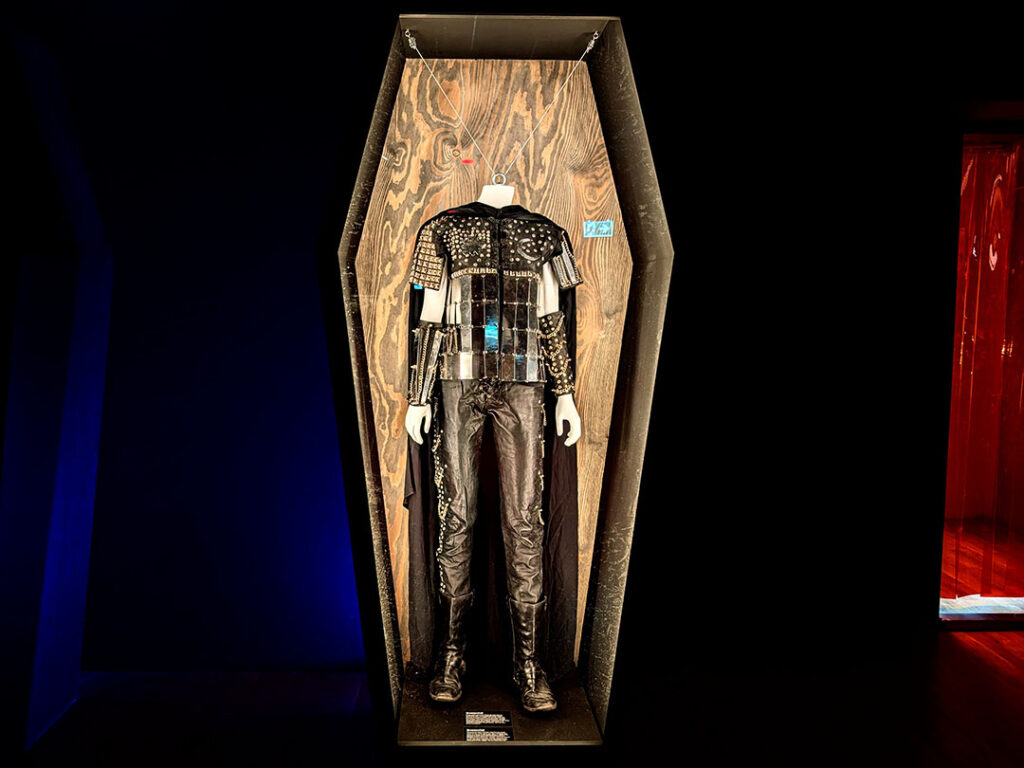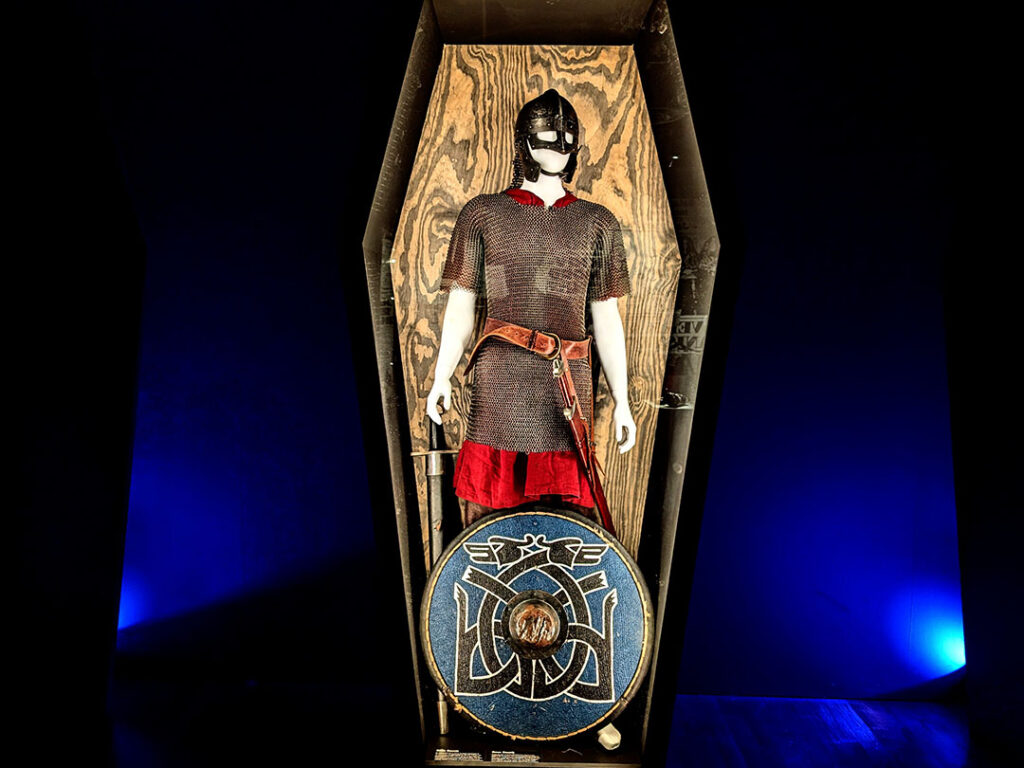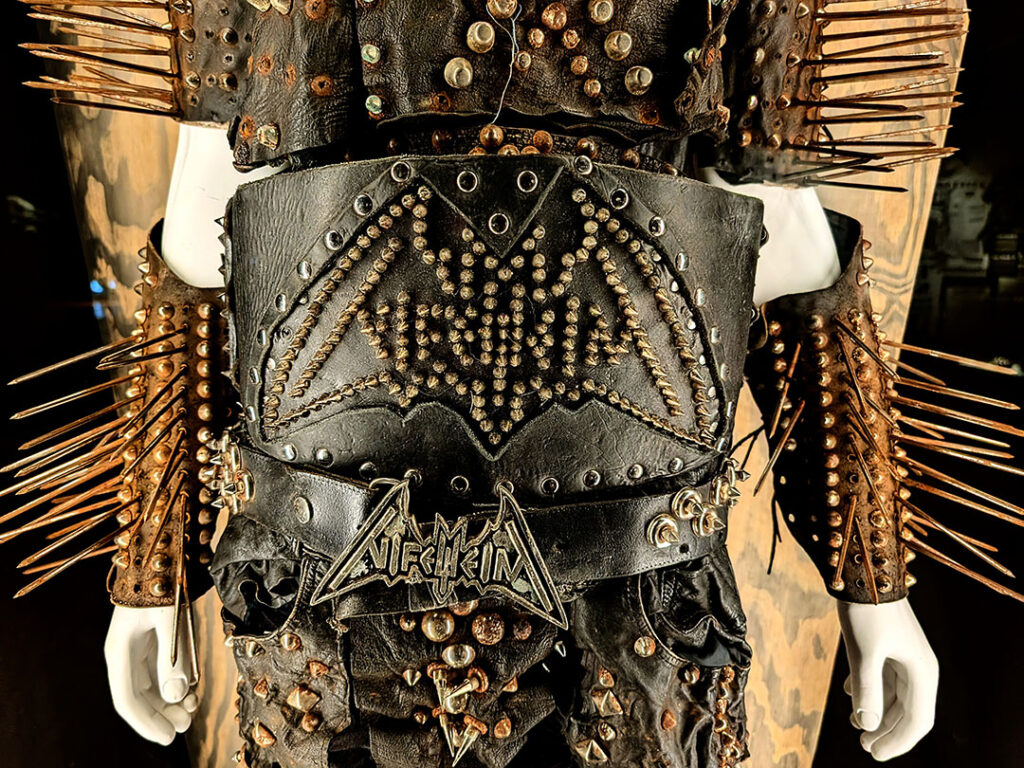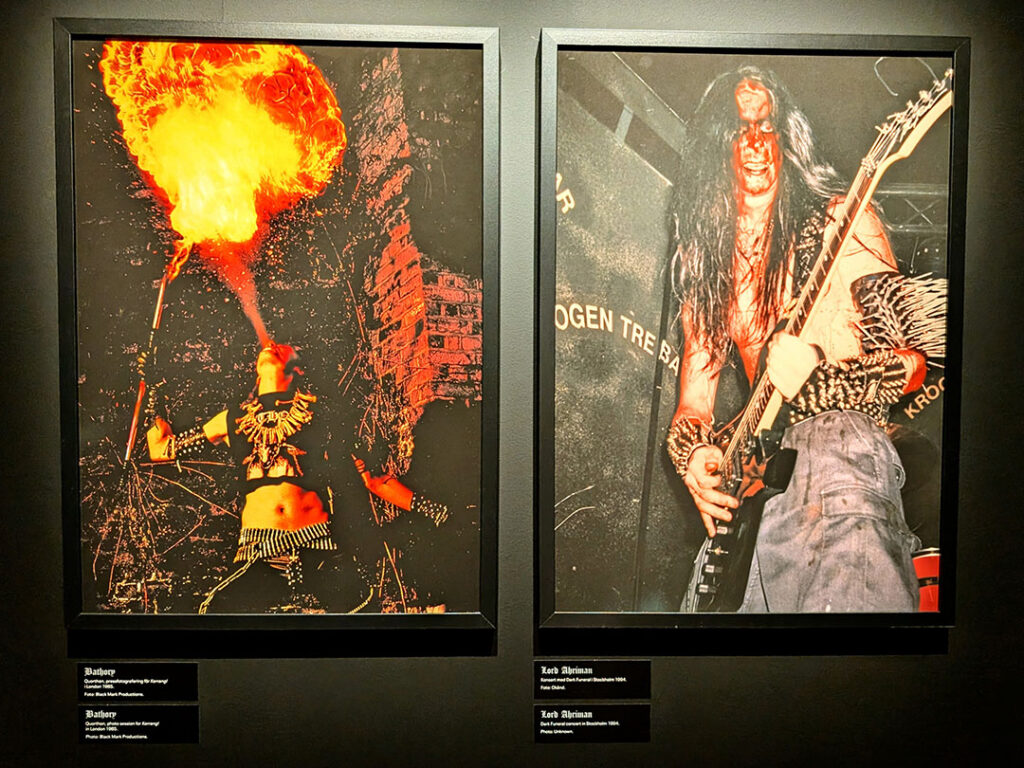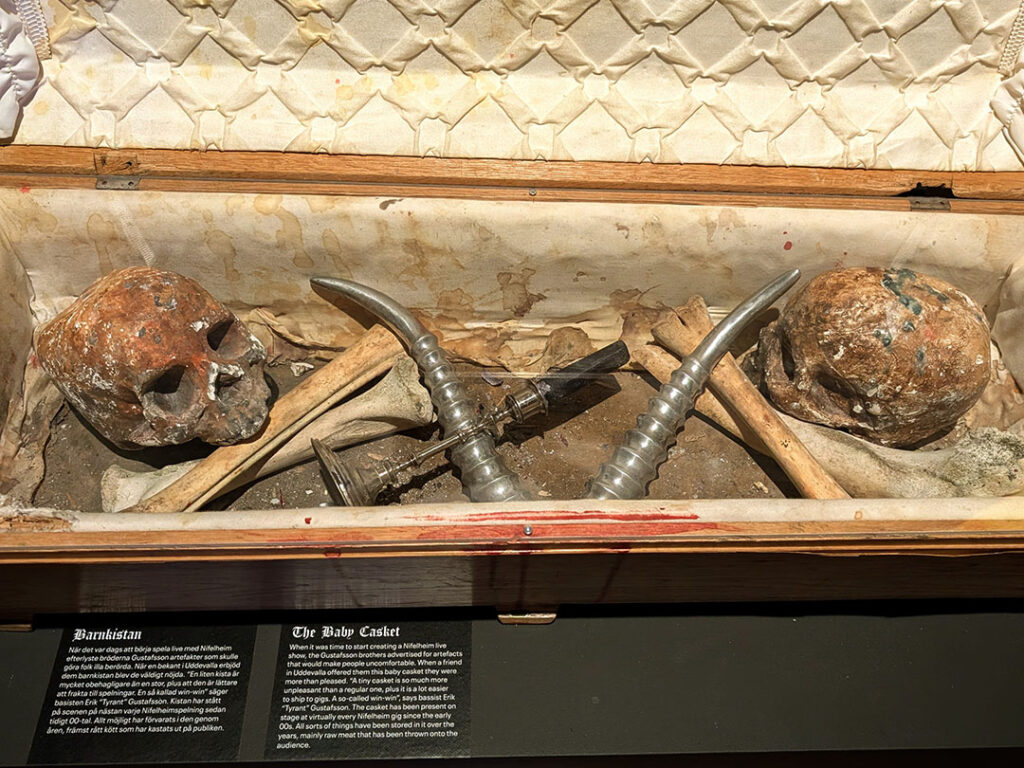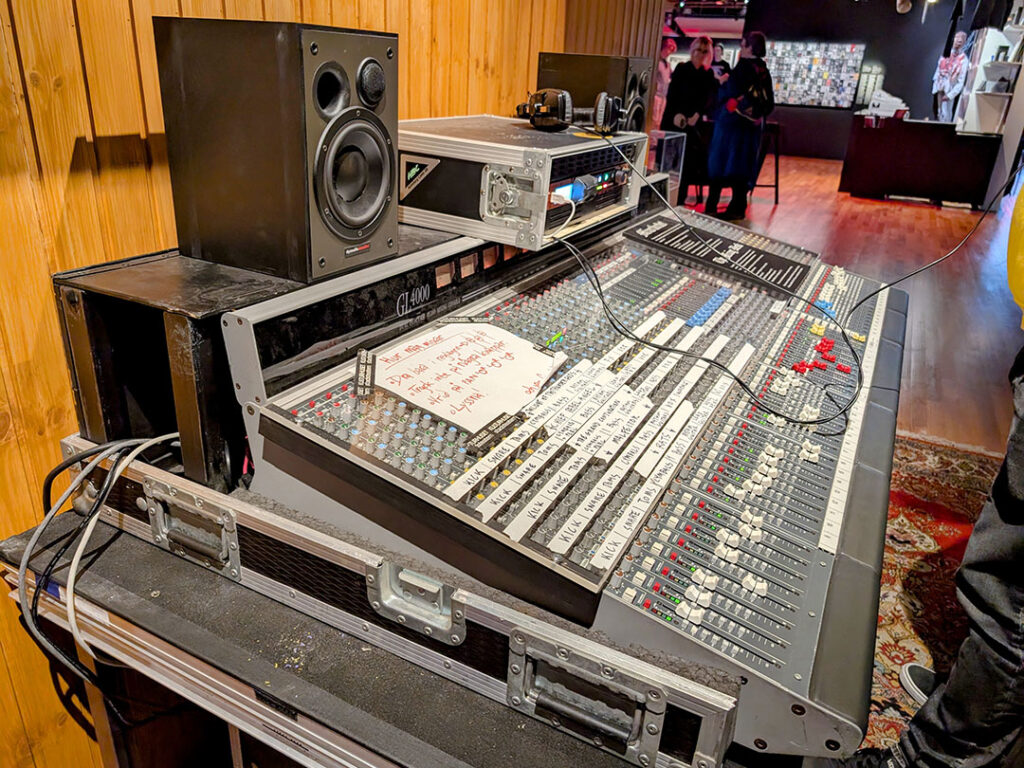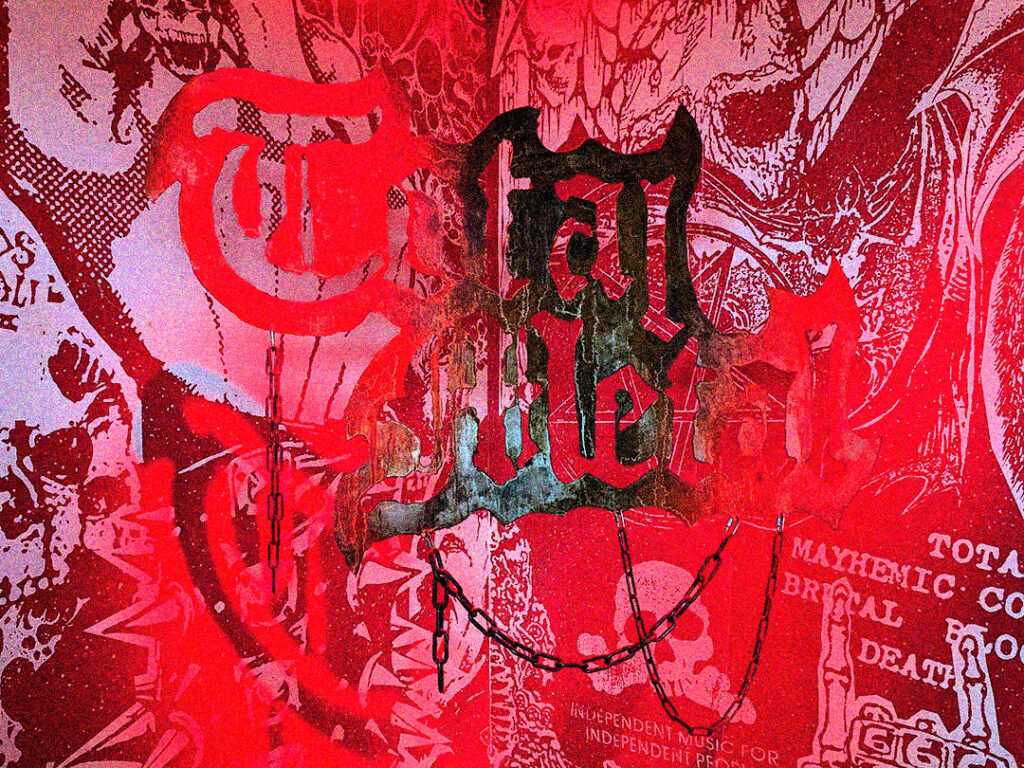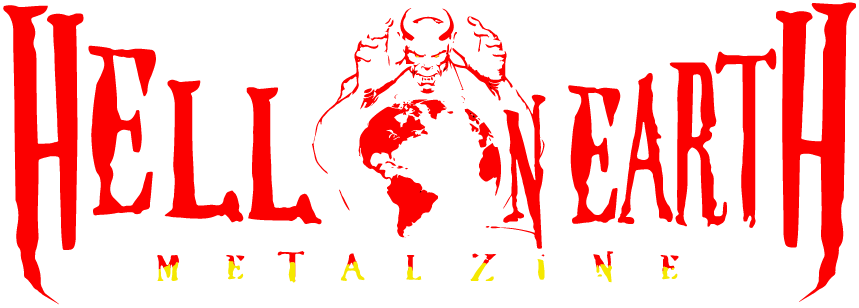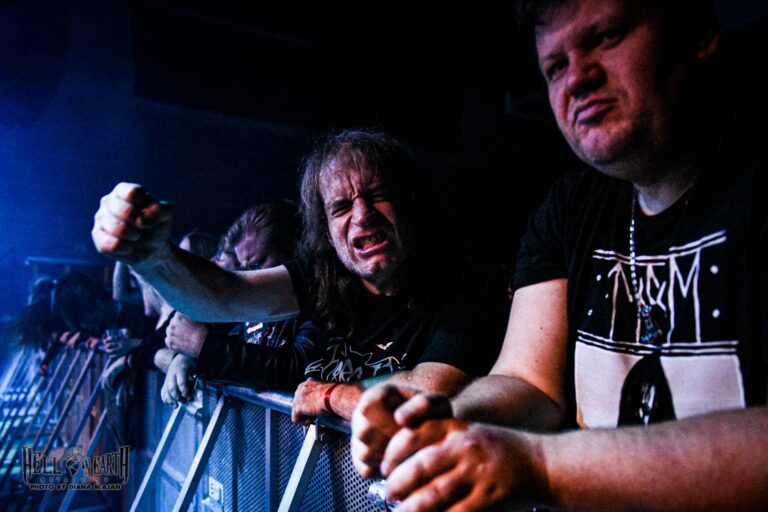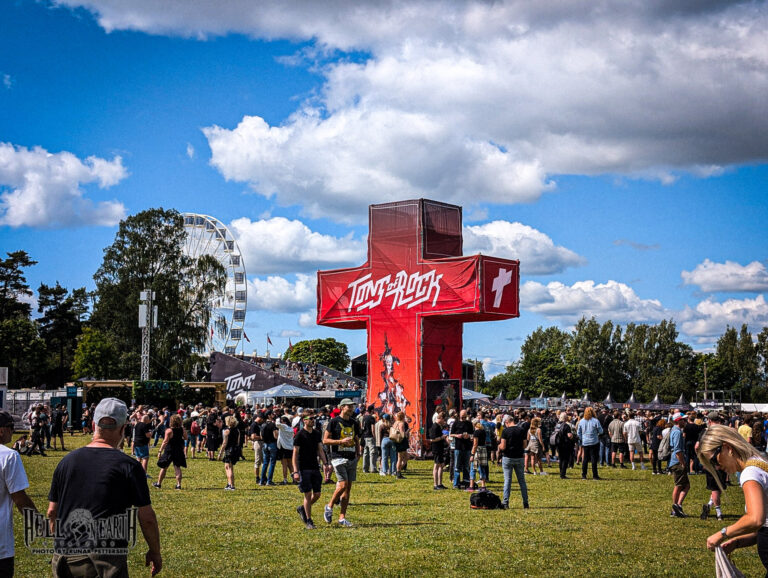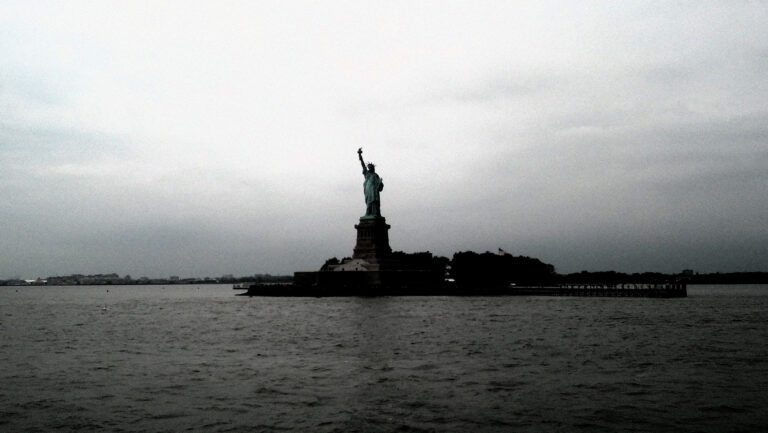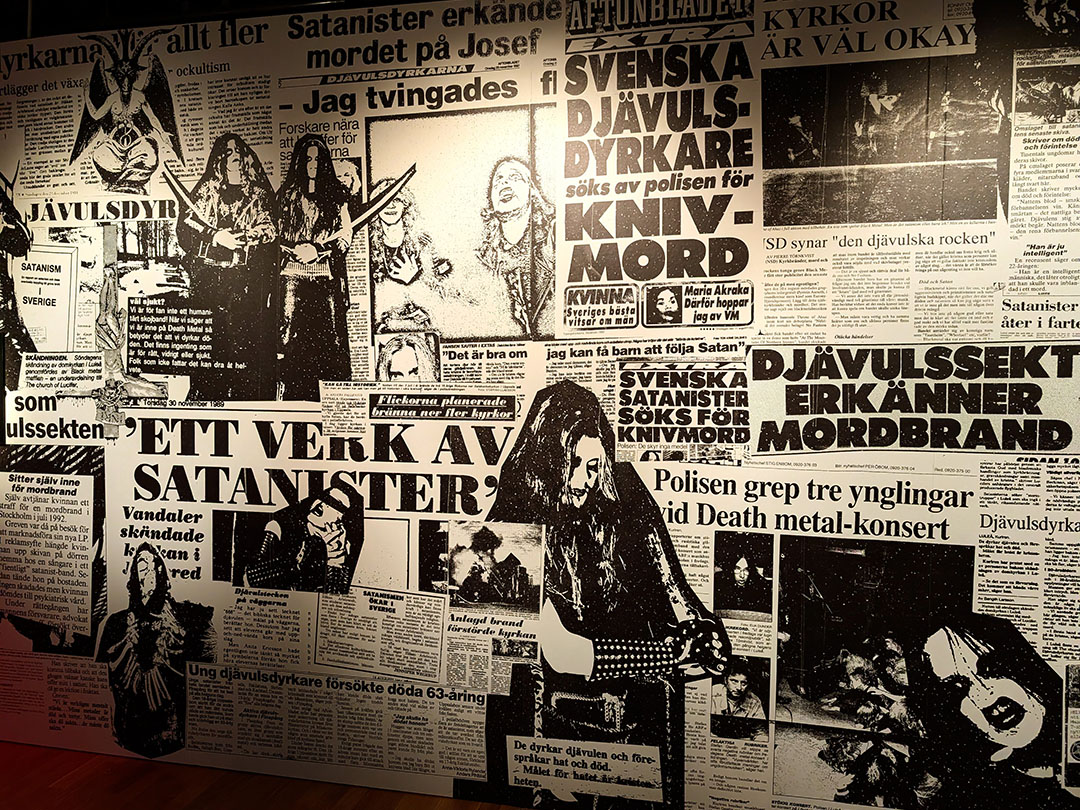
Kulturhuset Stadsteatern, Stockholm, Sweden
12 February – 20 September 2025
If you’re visiting Stockholm, you now have the chance to dip into a bit of Swedish metal history. After all, Sweden has an incredible legacy in metal – and despite being a small country, it’s had a major influence on the genre worldwide. From melodic hard rock like Europe, Ghost and Heavy Load to black metal legends like Bathory, Nifelheim and Watain. But of course: when all is said and done, it’s death metal that Sweden is best known for. First and foremost the unmistakable buzzsaw sound made famous by bands like Nihilist, Entombed, Dismember, Unleashed and Grave. But also the more melodic take, through bands like At the Gates, In Flames and Dark Tranquillity.
Rightfully so, a major exhibition has now been set up in Stockholm called Total Metal, where visitors can delve into this history. On display are early fanzines, stage props, artwork, costumes, studio gear and much more.
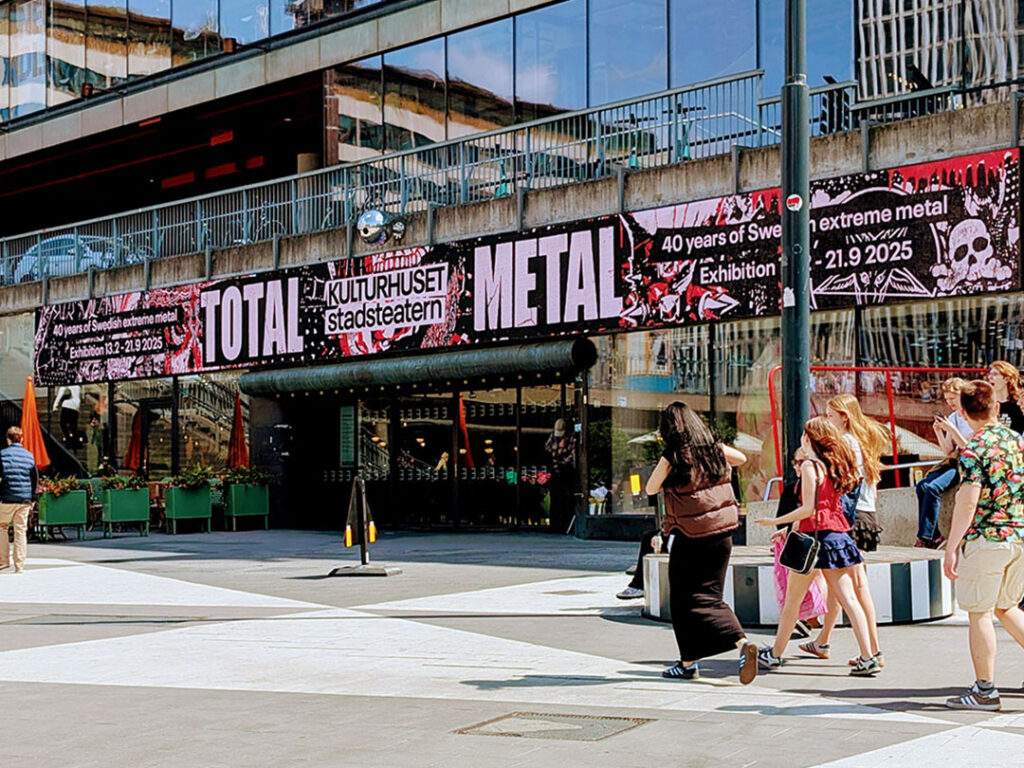
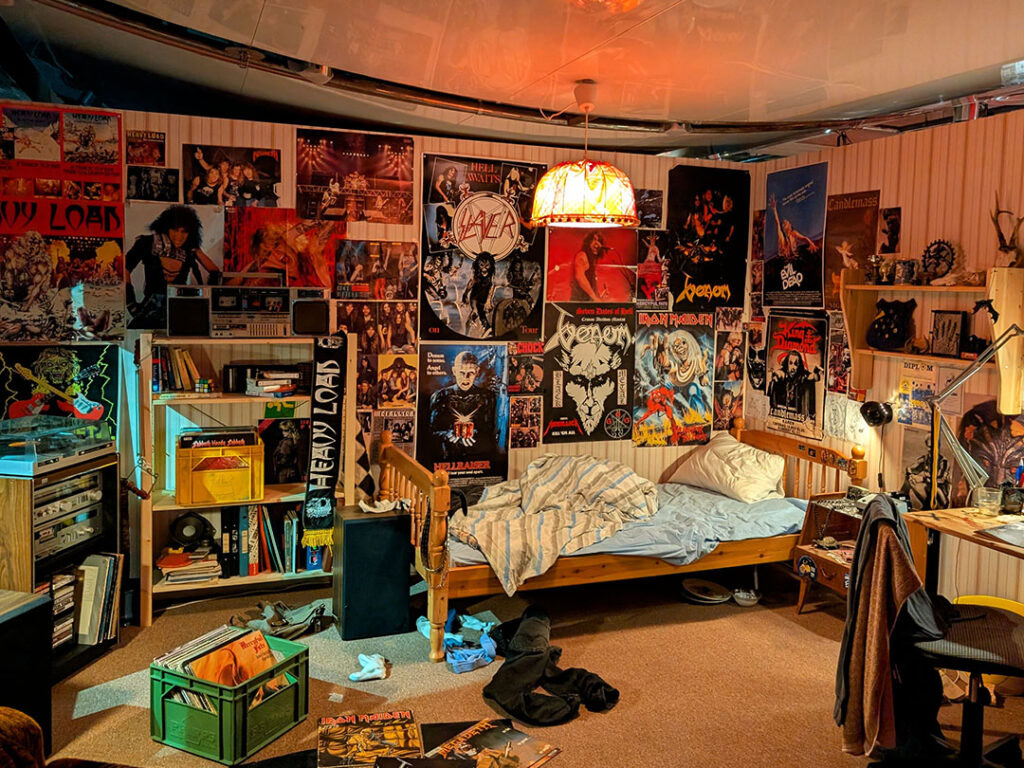
The whole thing kicks off with a video montage created by well-known director Jonas Åkerlund, who also played drums in Bathory in the band’s early days. It features classic clips from Sweden’s long hard rock and metal history – including footage from the Bröderna Hard Rock mini-documentary and Yngwie Malmsteen’s classic reasoning in what’s become known as the “More is more” speech.
The exhibition is housed at Kulturhuset Stadsteatern – just one of many things to experience at this venue. While the exhibition space isn’t massive, considering this is a niche subject that few of us could’ve imagined getting its own showcase thirty years ago, it’s actually quite large in that context. The curator is cultural journalist and author Ika Johannesson, co-author of Blod, Eld, Död: En Svensk Metalhistoria (Blood, Fire, Death: A Swedish Metal History). She’s done a solid job gathering some genuinely cool material for the exhibition.
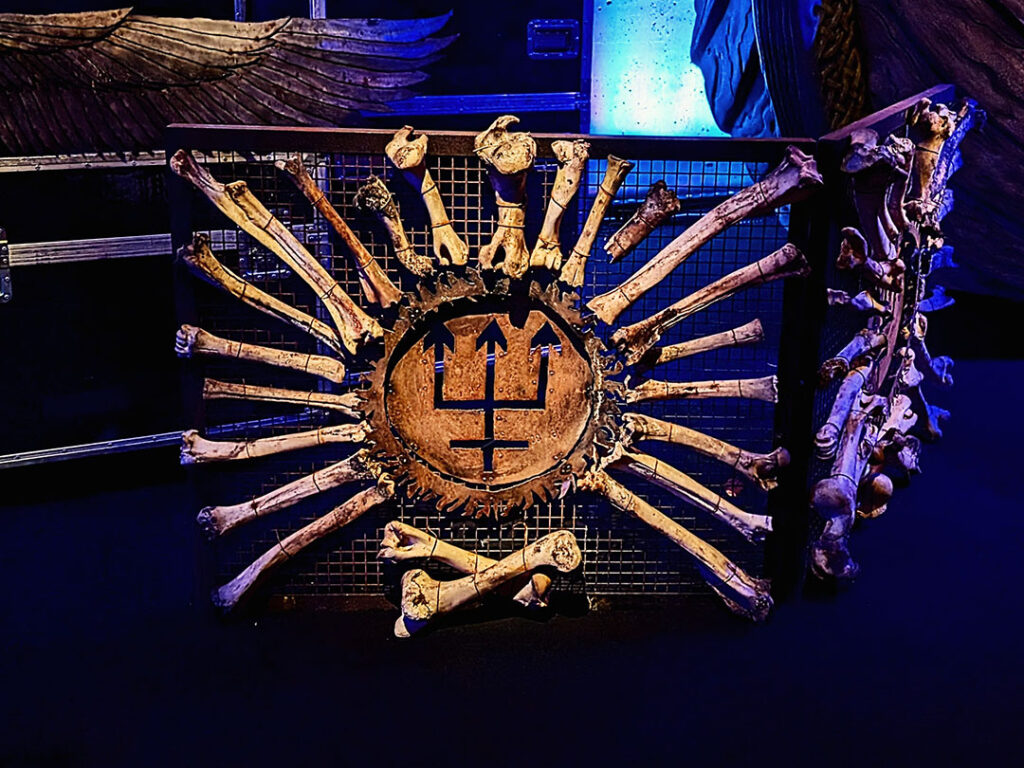
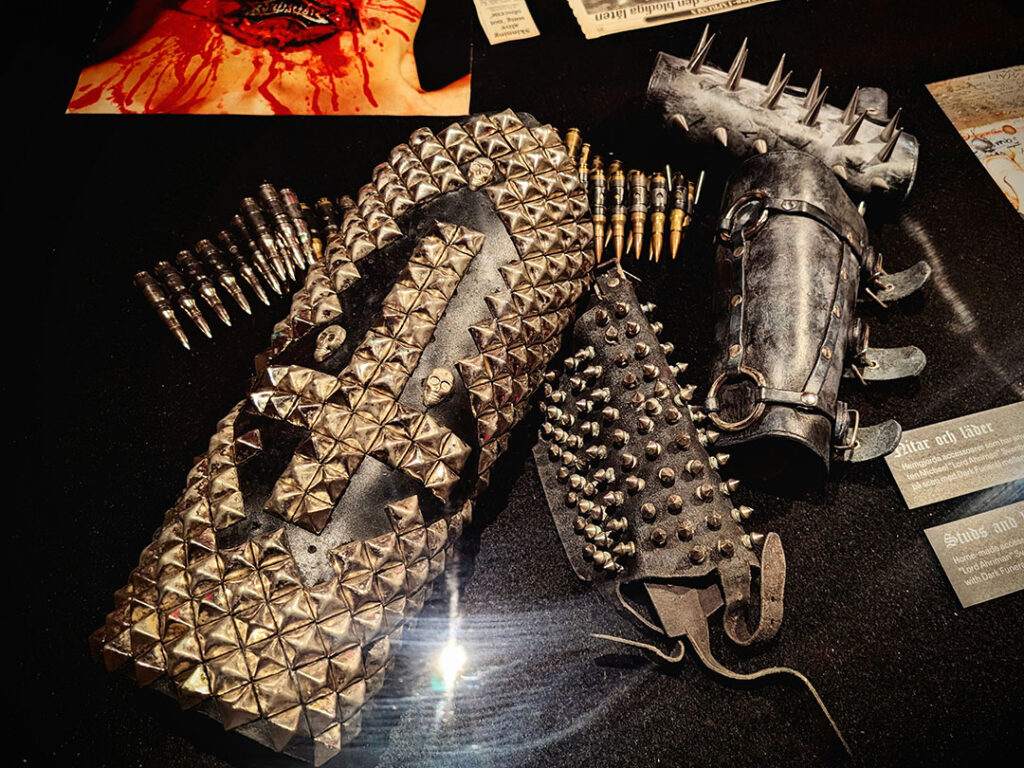
Among the biggest objects on display are Amon Amarth’s Viking ship and Sabaton’s tank. That’s likely due to the fact that these bands have put on massive stage shows. But there are also plenty of costumes – or more accurately, stage outfits – from bands like Ghost, Nifelheim, Hammerfall and Heavy Load.
Another important part of the exhibition is Sunlight Studio, where an entire room has been recreated with instruments and a mixing desk, letting visitors mix the track “Twilight of the Thunder God” themselves. Sunlight Studio is, after all, where the Stockholm sound was born – an essential part of Sweden’s metal history.
There’s also a short film in which prominent voices from Swedish metal reflect on the scene’s legacy. You’ll hear from people in bands like Opeth, Meshuggah, Nifelheim, Dark Tranquillity and many more.
“Few of us could’ve imagined a niche like this getting its own exhibition thirty years ago – and yet, here we are.”
If you want to take it a step further, there are also actual landmarks in Stockholm that metal fans can visit – like the Entombed cross, where the band shot their iconic promo photo back in the early ’90s. It’s located at Skogskyrkogården, a beautiful cemetery that’s also a UNESCO World Heritage Site, and well worth a visit in its own right. Also buried there is the late Entombed vocalist L.G. Petrov, whose grave features the emblem from the Morning Star album.
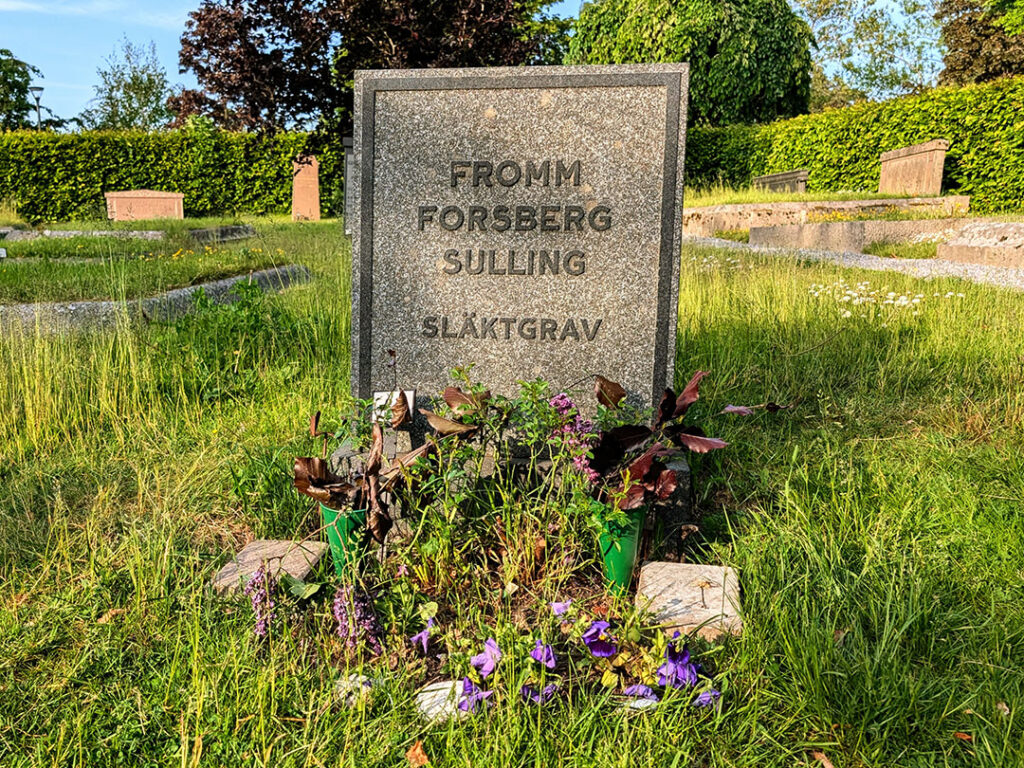
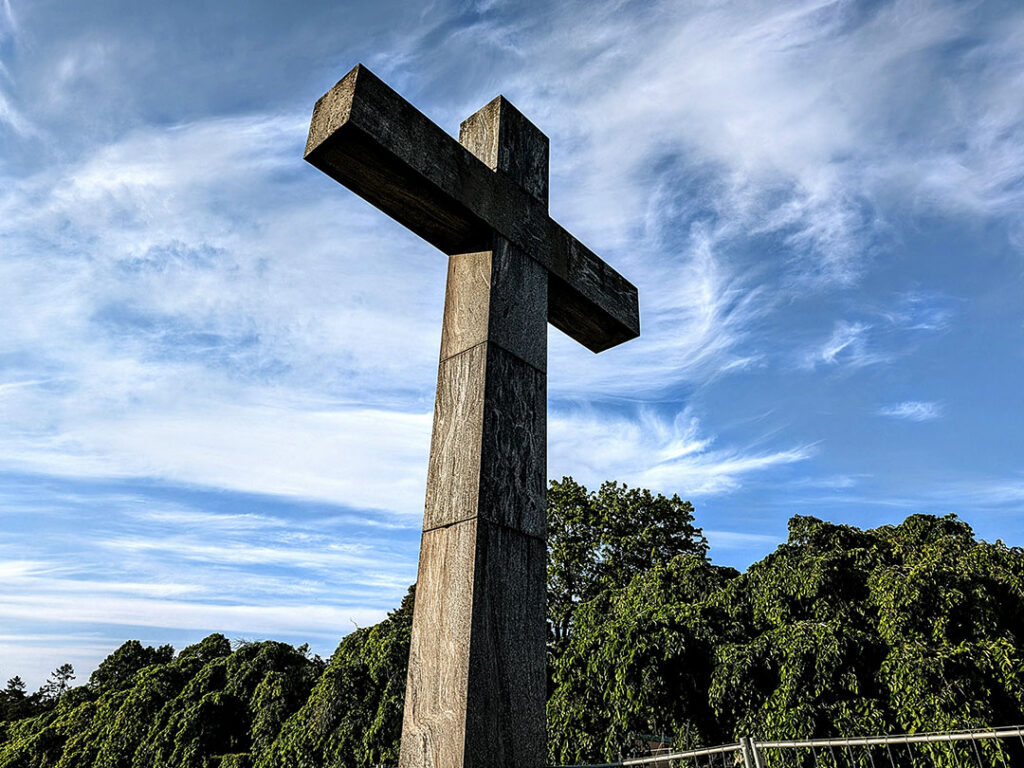


Not far away lies Sandsborgs kyrkogård, where another legend rests: Bathory frontman Quorthon – or Thomas Börje Forsberg, as he was actually called. One of the most important figures in both black metal and Viking metal. He lies in a modest family grave, along with his father Boss – real name Börje Forsberg – who was also no small figure in this world. He ran Black Mark Production, the record label that released albums from Bathory, Cemetary, Edge of Sanity, Lake of Tears and Morgana Lefay, among others.


Naturally, with an exhibition like this, there are things you could point out or wish had been included. For instance, the Stockholm death metal scene gets a lot of space, while the Gothenburg scene is somewhat sidelined. Maybe that’s because the exhibition is in Stockholm. Maybe because it was more visually compelling. Or maybe just because it was more influential? Some might also say there’s too little focus on genres outside of death and black metal. Sure – but those are the genres Sweden really became known for. Bands like Sabaton and Ghost came along later, and even though they are featured in the exhibition, it might still be a bit early to place them in a museum. So all things considered, I think the exhibition includes what matters most and prioritises wisely. The only band I am missing more of is doom metal legends Candlemass.
There’s something strange about seeing the music so many of us grew up with in the ’80s and ’90s now placed in a museum-like setting. Many will probably feel a bit old – especially since the genre is still very much alive, and many of the bands featured are still active. Plenty of fans will no doubt feel a wave of nostalgia – for better or worse. But on the other hand, it’s also satisfying to see the Swedish metal scene finally getting the respect and recognition it deserves. Norway has had similar exhibitions focused on black metal, but outside of that, this kind of exhibit isn’t something you’ll find in most countries. Credit to the Swedes for their long and dedicated metal history. If you’ve got even a hint of interest in metal, Total Metal is well worth a visit.
